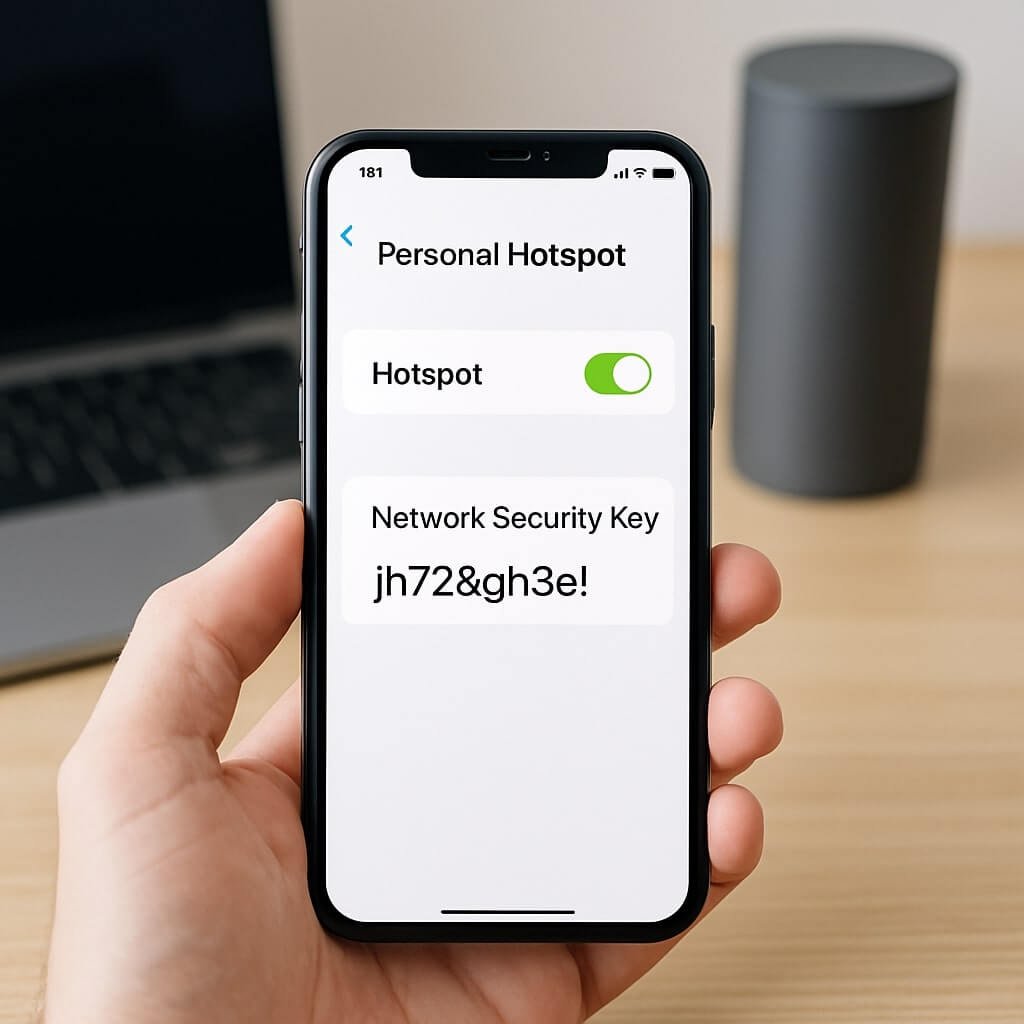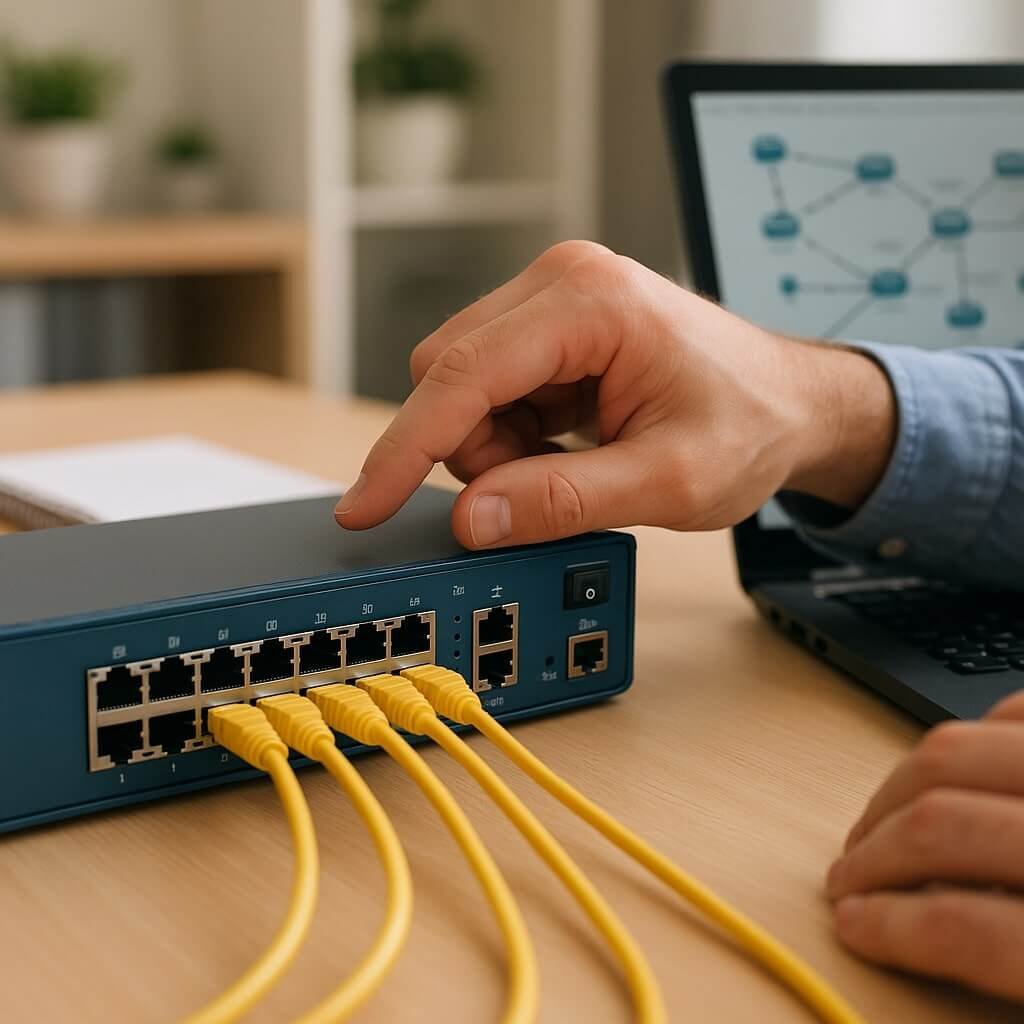In today’s digital landscape, identifying key vulnerabilities in network security is vital for safeguarding your systems. Outdated software, weak passwords, and misconfigured devices can all serve as gateways for cyber threats. Furthermore, insider threats and third-party vendor risks further complicate your security posture. Understanding these vulnerabilities is essential, as neglecting them can lead to significant breaches. So, what steps can you take to strengthen your defenses against these pervasive issues?
Key Takeaways
- Outdated software and unpatched vulnerabilities expose networks to exploitation by cybercriminals, necessitating regular updates and vulnerability assessments.
- Weak passwords and lack of multi-factor authentication (MFA) increase unauthorized access risks, emphasizing the need for strong authentication measures.
- Misconfigured network devices create exploitable vulnerabilities, requiring regular audits and automated configuration management tools for compliance.
- Insider threats from employees or partners can lead to data breaches, highlighting the importance of security policies and continuous monitoring for anomalies.
- Third-party vendor risks can compromise security; thorough assessments are essential to manage potential exploitation and maintain compliance with security standards.
Outdated Software and Patch Management
Although many organizations recognize the importance of updating their software, outdated systems remain a significant vulnerability in network security. When you neglect software updates, you’re exposing your network to exploitation by cybercriminals who target known vulnerabilities.
Conducting regular vulnerability assessments helps identify these risks, enabling you to prioritize patch management effectively. By implementing a structured update schedule, you guarantee that critical security patches are applied promptly, minimizing the window of exposure.
In addition, maintaining an inventory of software assets can aid in tracking which applications require updates. Remember, every delay in patching can translate into a potential breach, making proactive measures essential for safeguarding your network integrity.
Don’t underestimate the importance of timely software updates in your cybersecurity strategy.
Weak Passwords and Authentication Issues
When users create weak passwords or fail to implement robust authentication processes, they greatly increase their risk of unauthorized access to network systems.
Creating weak passwords and neglecting strong authentication measures heightens the risk of unauthorized network access.
Weak passwords often lack sufficient password complexity, making them easy targets for attackers using common techniques like brute force attacks.
To mitigate this risk, you should adopt a password policy that enforces complexity requirements, such as a mix of uppercase and lowercase letters, numbers, and special characters.
Additionally, implementing multi-factor authentication (MFA) adds an essential layer of security. MFA requires users to provide two or more verification factors, considerably reducing the likelihood of unauthorized access, even if passwords are compromised.
Misconfigured Network Devices
Misconfigured network devices pose significant security risks, as they can create vulnerabilities that attackers readily exploit. When you overlook proper network device configurations, you inadvertently weaken your overall security posture.
For instance, incorrect VLAN setups can lead to unauthorized access between network segments, while misconfigured firewalls may allow unwanted traffic. Without stringent security policy enforcement, devices may operate under outdated firmware or rely on default settings, making them easy targets.
Regular audits of your network device configurations are essential to identify and rectify issues before they can be exploited. Implementing automated configuration management tools can enhance your ability to maintain compliance and guarantee that your security posture remains robust against evolving threats.
Lack of Encryption
One major vulnerability in network security is the lack of encryption, which can leave sensitive data exposed during transmission.
Without robust encryption methods, such as AES or TLS, your data remains vulnerable to interception by malicious actors. This exposure can lead to unauthorized access, data breaches, and significant financial losses.
Lack of strong encryption leaves your data exposed, risking unauthorized access and costly breaches.
Implementing encryption isn’t just a technical necessity; it’s crucial for data protection. By encrypting data at rest and in transit, you guarantee that even if attackers gain access to your network, they can’t decipher critical information.
Regularly updating your encryption protocols and employing strong keys will further bolster your defenses.
Ultimately, prioritizing encryption methods is essential to safeguarding your organization’s sensitive data and maintaining trust with your clients.
Insecure Wireless Networks
While encryption plays an essential role in securing data, the risks associated with insecure wireless networks can undermine those protections. When you connect to an unsecured Wi-Fi network, you expose your data to interception by malicious actors.
Without proper wireless security measures, such as WPA3 encryption, your sensitive information like passwords and financial details can be easily accessed. Even with network encryption in place, vulnerabilities arise if weak passwords or outdated protocols are utilized.
It’s vital to regularly update your router firmware and use a strong, unique password to bolster your wireless security. By prioritizing these measures, you can greatly mitigate the risks associated with insecure wireless networks and better protect your data from unauthorized access.
Insider Threats
Insider threats pose a significant risk to your organization’s security, encompassing various types that can arise from employees, contractors, or business partners.
Understanding how to detect these threats and implementing effective prevention strategies is essential for safeguarding sensitive data.
The impact of insider threats can be profound, affecting not only financial stability but also your organization’s reputation and trustworthiness.
Types of Insider Threats
Understanding the various types of insider threats is essential for effective network security management. These threats can stem from different behavioral patterns and intentions among employees.
- Malicious Insiders: Individuals who intentionally exploit their access to commit insider fraud or engage in espionage activities.
- Negligent Behavior: Employees who, through careless actions, cause data leakage or unintentionally enable access abuse, compromising sensitive information.
- Insider Collusion: Collaborations among employees, often involving psychological manipulation, to bypass security measures, leading to significant breaches.
Recognizing these categories helps you implement appropriate defenses.
Detection and Prevention Strategies
To effectively combat insider threats, organizations must implement a robust framework for detection and prevention that integrates technology, policy, and employee training.
Start with thorough network monitoring to continuously analyze user behavior and identify anomalies that could indicate malicious intent. Utilize advanced threat intelligence to gather insights on potential insider threats that may originate from current or former employees.
Establish clear policies that define acceptable use and consequences for violations, ensuring employees understand the implications of their actions.
Regularly conduct training sessions that emphasize security awareness and the importance of vigilance.
Impact on Organizations
Effective detection and prevention strategies can greatly mitigate insider threats, but the impact of these threats on organizations remains profound and multifaceted.
When an insider commits a cyber attack, the repercussions can be severe, leading to:
- Financial Loss: The costs of a data breach can skyrocket, with penalties from regulatory fines further exacerbating the financial strain.
- Reputation Damage: Trust erodes as customers become wary, markedly impacting customer loyalty and brand integrity.
- Operational Disruption: Internal sabotage can halt productivity, causing delays and resulting in a competitive disadvantage.
Understanding these potential impacts is essential for organizations to allocate resources effectively, enhance security measures, and maintain customer trust while maneuvering through the complexities of insider threats.
Unpatched Vulnerabilities
Unpatched vulnerabilities in software are a critical concern for network security, as they often serve as gateways for attackers.
When you neglect to update your systems, you expose your network to significant risks, including data breaches and unauthorized access.
Understanding common software issues and implementing best practices for timely patching is essential to mitigate these threats effectively.
Common Unpatched Software Issues
While many organizations prioritize regular software updates, they often overlook common unpatched vulnerabilities that can lead to significant security breaches.
Neglecting effective patch management puts your network at risk. Here are three prevalent issues you should address:
- Outdated Operating Systems: Many companies fail to update their OS, leaving them exposed to known exploits.
- Deprecated Applications: Legacy software often contains unpatched vulnerabilities that hackers readily exploit.
- Third-Party Plugins: Frequently overlooked, these add-ons can harbor software vulnerabilities if not kept current.
Impact of Vulnerability Exploitation
When organizations neglect to address unpatched vulnerabilities, they expose themselves to a range of severe consequences that can compromise both their data integrity and operational continuity.
Exploit consequences can manifest as unauthorized access to sensitive data, leading to data breaches that damage reputations and erode customer trust. Additionally, attackers can deploy ransomware, crippling operations and forcing businesses to pay hefty ransoms.
The financial repercussions of these incidents extend beyond immediate costs; they can include regulatory fines, legal fees, and long-term loss of revenue. Moreover, the recovery process can drain resources, diverting attention from strategic initiatives.
Best Practices for Patching
Addressing vulnerabilities through effective patch management is essential for maintaining robust network security.
To minimize risks associated with unpatched vulnerabilities, consider implementing these best practices:
- Automated Patching: Utilize tools that automate patch deployment, ensuring timely updates and reducing human error.
- Regular Audits: Conduct frequent audits of your systems to identify outdated software and prioritize patches based on vulnerability severity.
- User Training: Educate your team on the importance of patch management, emphasizing how timely updates safeguard against potential exploits.
Insufficient Security Policies
Insufficient security policies often leave organizations vulnerable to various cyber threats, as they fail to establish a robust framework for protecting sensitive data. Without clear guidelines, employees mightn’t understand their roles in safeguarding information, leading to lapses in security.
Policy enforcement is vital; without it, even the best-designed policies become ineffective. Regular security training guarantees that employees aren’t only aware of existing policies but also understand their importance in daily operations.
Additionally, failing to update policies in response to emerging threats can create gaps that cybercriminals exploit. A thorough approach to security policies, incorporating extensive training and strict enforcement, is essential for minimizing risks and enhancing overall cybersecurity posture.
Third-Party Vendor Risks
Although many organizations rely on third-party vendors to enhance their operations, these relationships can introduce significant security vulnerabilities.
To effectively mitigate these risks, you must prioritize a thorough vendor assessment as part of your risk management strategy.
Prioritizing a comprehensive vendor assessment is essential for effective risk management.
Consider the following:
- Data Access: Vendors often require access to sensitive data, which can be exploited if not properly controlled.
- Compliance: Third-party vendors may not adhere to the same security standards, potentially exposing your organization to legal ramifications.
- Supply Chain Risks: A breach in a vendor’s system can cascade through your network, compromising your security posture.
Conclusion
To effectively safeguard your network, it’s vital to address these key vulnerabilities. Regularly update your software and enforce strong password policies to mitigate unauthorized access. Guarantee proper configuration of network devices and implement robust encryption to protect sensitive data. Additionally, monitor insider activities and assess third-party vendor risks. By establishing thorough security policies and maintaining continuous oversight, you can greatly reduce your network’s exposure to threats and enhance its overall resilience against potential attacks.






